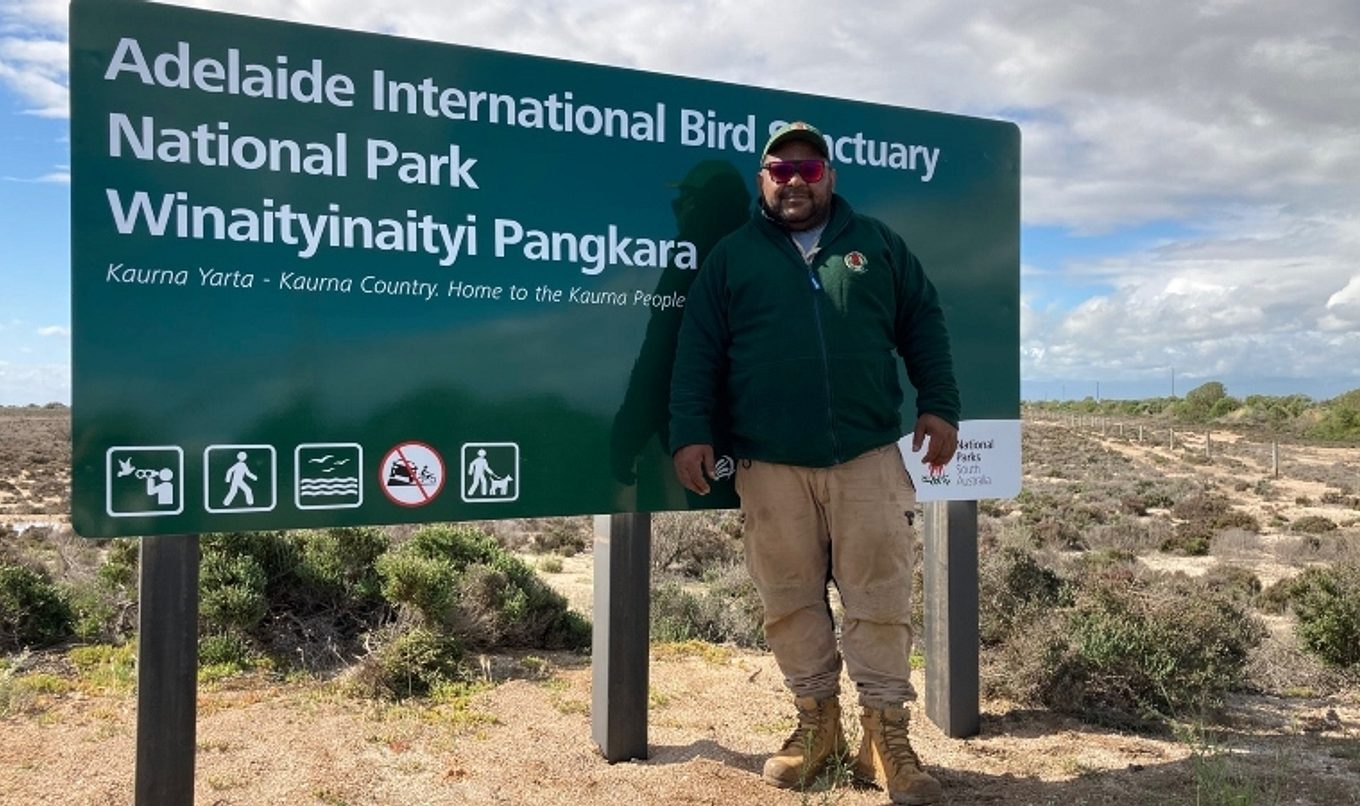First Kaurna ranger appointed for Adelaide International Bird Sanctuary
One of South Australia’s first graduates from the Kaurna Ranger Training Program has been appointed to the Adelaide International Bird Sanctuary (AIBS) National Park - Winaityinaityi Pangkara.

Phillip Dudley is an emerging Kaurna and Narungga leader and his appointment highlights the strong connection between the Kaurna people and the AIBS. Mr Dudley was successful in obtaining the role after completing the state government's first Kaurna Ranger Training Program last year.
The 14-week program was led by Kaurna Elders Jeffrey Newchurch and Merle Simpson, in partnership with the Green Adelaide/Hills and Fleurieu Landscapes regions and National Parks and Wildlife Service South Australia.
Program participants were taught ranger skills including wildlife and native plant identification, on-park compliance and pest management, machinery operation and safe chemical use. Students also discovered more about their own culture through visits to culturally significant sites, accompanied by Kaurna Elders.
A key part of Mr Dudley’s new role will be to maintain, promote and sustain traditional cultural sites and practices within the park, including places such as Thompson Beach–Widninga, Port Gawler–Muliakki, and St Kilda–Moilong.
RAWsa Chief Executive Officer Allan Jones helped to coordinate the training program and mentor the team. His guidance helped ensure it achieved positive outcomes and strong bonds between all involved in the program.
Kaurna knowledge is integral to the planning, establishment and management of the park.
Since 2016, the Kaurna community has provided strong spiritual and cultural leadership throughout the establishment of the national park.
AIBS is built on a strong foundation of collaboration and partnerships, and it is recognised that the Kaurna people are the traditional owners of the national park.
The AIBS is a known wildlife haven of international significance, particularly for migratory shorebirds.
It offers a bounty of feeding and roosting opportunities for the thousands of shorebirds that travel each year to Australia, through south-east Asia from as far afield as Alaska, across what is known as the East Asian-Australasian Flyway.

